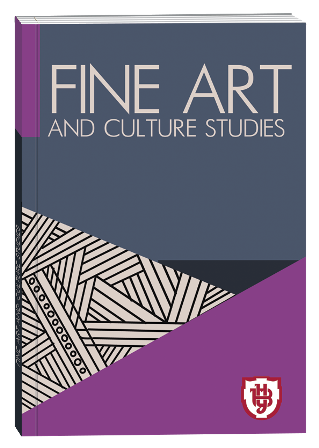CULTURAL DIPLOMACY IN FOREIGN HUMANITIES
DOI:
https://doi.org/10.32782/facs-2025-2-35Keywords:
diplomacy, cultural diplomacy, humanitarian studies, dynamics, development, trends, world politics,Abstract
In a general sense, world humanitarian studies understand cultural diplomacy as a sphere of politics in which states seek to mobilize their cultural resources to achieve foreign policy goals. The nature of these goals and the cultural resources mobilized to achieve them has undergone historical changes, and a number of terms have been used to designate this type of policy in various national and historical contexts. During the 19th century, cultural diplomacy was closely associated with the rivalry of the Great Powers, especially in the colonial context. However, after the end of World War I, cultural diplomacy increasingly began to be understood as a means of ideological competition, a trend that became central to Cold War cultural diplomacy. Nevertheless, the focus of scholars on the cultural dimensions of the confrontation between the two superpowers of the Cold War diverted attention from other varieties of cultural diplomacy in the “Third World” or “Global South”, which sought to establish forms of solidarity between postcolonial nations. It was in this form, adapted to the post-bipolar realities of world politics, that the appeal to the phenomenon of cultural diplomacy went beyond the boundaries of the American academic environment and was accepted by researchers from other countries. Despite the diversity of concepts, today in international discourse the concept of cultural diplomacy is considered a generally accepted term. Definitions of cultural diplomacy, taking into account specific goals and forms of its implementation, are variable. In the post-bipolar period, the development of world politics has attracted interest in cultural diplomacy among leaders outside the American academic space and in gaining recognition among scientists from other countries. Regardless of the variety of approaches and interpretations, the term cultural diplomacy has become entrenched in the international scientific community as an obscure concept. The significance of cultural diplomacy can be differentiated depending on the specific forms of its implementation. Systematic understanding of this phenomenon began in the 1960s in the 20th century. Within the framework of cultural diplomacy, a variety of tools will be used, including: art (theatre, cinema, music, dance, painting, sculpture), organization of exhibitions, international events, such as EXPO; educational and academic exchange programs, international courses outside the border; popularization of literature through the creation of libraries or translation of works into other languages; international expansion of new products and cultural content; as well as religious diplomacy, including projects for interreligious dialogue.
References
Ang I., Isar Y. R., Mar P. Cultural diplomacy: Beyond the national interest? International Journal of Cultural Policy. 2015. № 21(5). Р. 365–338.
Isar Y. R. Cultural diplomacy: An overplayed hand? Public Diplomacy Magazine. 2010. № 5. Р 29–44.
Byrne Caitlin Public Diplomacy and Constructivism: A Synergistic and Enabling Relationship. International Studies Association Annual Conference, San Diego, (1-4 April 2012). URL:http://files.isanet.org/ConferenceArchive/c0f3deebd76244828cc6ed1c12810555.pdf (дата звернення:10.03.2025)
Zaharna R. S. Mapping Out a Spectrum of Public Diplomacy Initiatives: Information and Relational Communication Frame-works. Routledge Handbook of Public Diplomacy. 2009. № 6. Р. 86–100.
Milton CJr. Cultural Diplomacy and the United States Government. Washington DC: Center for Arts and Culture, 2013. 145 р.
Leonard M. Diplomacy by Other Means. Foreign Policy. 2002. № 132 (September–October). Р. 48–56.
Bano M., Chaudhri, Z. Zowghi, The Role of Generative AI in Global Diplomatic Practices: A Strategic Framework. 2023. № 9. https://doi.org/10.48550/arXiv.2401.05415
Riordan, N., Machon, M., & Csajkova, L. Space Diplomacy and the Artemis Accords. 2023. № 6. https://doi. org/10.48550/arXiv.2311.12137
Сухорольська І. Ю. Громадська (публічна) дипломатія в сучасних міжнародних відносинах: нові тренди і особливості. Регіональні студії. 2020. № 30. С. 103–107. https://dspace.uzhnu.edu.ua/jspui/handle/lib/69345
Завада Я. І., Дударчук В. І. Публічна дипломатія як засіб «м’якої сили» США на Близькому Сході. Політичне життя. 2021. № 3. С. 112–118. https://doi.org/10.31558/2519-2949.2021.3.17
Вилінський С. І. «М’яка сила» у зовнішній політиці Федеративної Республіки Німеччина: дис. … канд. політ. наук за спеціальністю 23.00.04 – політичні проблеми міжнародних систем та глобального розвитку. Київський національний університет імені Тараса Шевченка Міністерства освіти і науки України. Київ, 2019. 228 с.







